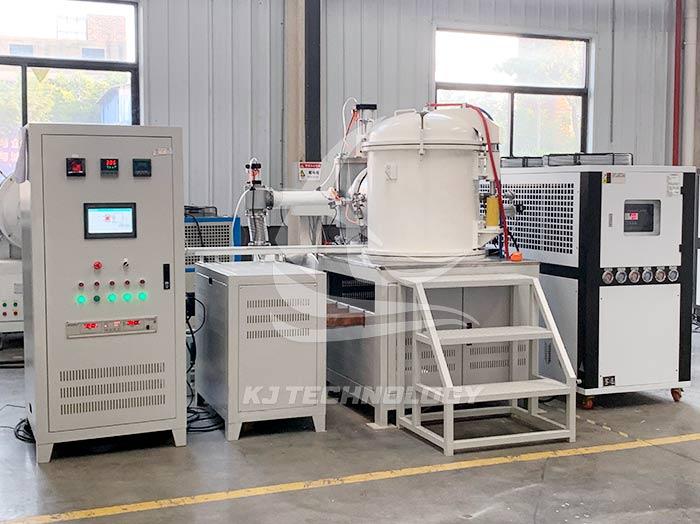Application of Gas Vacuum Furnace in Ceramic Industry
 07-29-2025 Author: KJ technology
07-29-2025 Author: KJ technology
The application of gas vacuum furnaces in the ceramic industry is extensive and critical, mainly reflected in ceramic sintering, ceramic metal sealing, ceramic degassing, and special ceramic preparation. The following is a specific introduction:
1. Ceramic sintering
The gas vacuum furnace eliminates active gases such as oxygen, water vapor, and nitrogen from the air through a vacuum environment, providing a pure environment for ceramic sintering and avoiding oxidation, decarburization, or impurity infiltration. For example, in the sintering of alumina ceramics, a vacuum environment can suppress the diffusion of oxygen elements, promote cation diffusion, make grain growth more uniform, and improve material density. In addition, vacuum sintering can accelerate the exhaust of internal gases in ceramics, shorten sintering time, and reduce energy consumption. For nitride ceramics (such as aluminum nitride), efficient sintering can be achieved in a vacuum environment combined with a nitrogen atmosphere to obtain high-performance products.
2. Ceramic metal sealing
During the sealing process between ceramics and metals, a gas vacuum furnace ensures that the molten solder wets the surface of the ceramic metallization layer by precisely controlling the temperature and atmosphere, forming a high-strength connection. For example, in the sealing of electric vacuum devices, the vacuum environment can avoid the influence of oxide layers on the bonding strength, and the defect rate of solder joints is less than 0.1%, meeting the stability requirements for high-frequency signal transmission. At the same time, vacuum conditions can also improve the wettability of liquid to solid phases, promote shrinkage and improve alloy structure, enhance the airtightness and heat resistance of sealing components.
3. Ceramic degassing
Ceramic materials are prone to absorbing moisture and gases during the manufacturing process, leading to an increase in gas release rate and affecting device performance. The gas vacuum furnace uses high-temperature baking to remove gas and reduce the ceramic gas release rate. For example, when porous ceramics are used as internal components in vacuum systems, they need to be baked at 800-1000 ℃ to remove air and reduce the surface gas release rate to 10 ⁻¹¹ Pa · m ³/m ² · s, which helps maintain the vacuum degree inside the device. In addition, ceramics need to be thoroughly cleaned and baked in vacuum or dry air after grinding to further reduce the amount of air released.
4. Preparation of special ceramics
The gas vacuum furnace also supports the preparation process of special ceramics, such as transparent ceramic sintering. By combining a vacuum environment with precise temperature control, ceramic materials with high transparency and high density can be obtained. For example, transparent alumina ceramics can be sintered in a hydrogen atmosphere, while transparent ferroelectric ceramics are suitable for sintering in an oxygen atmosphere. In addition, the vacuum environment can promote the removal of impurities or their oxides such as silicon, aluminum, magnesium, calcium, etc., playing a role in purifying materials and improving ceramic performance.








